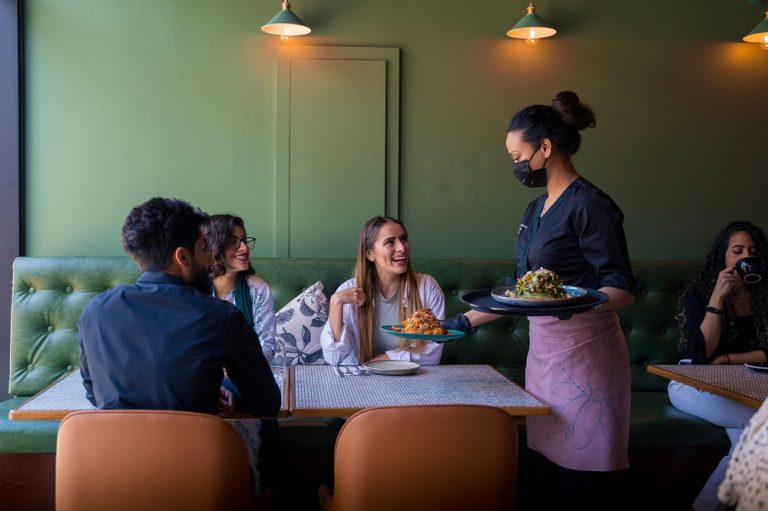In the world of restaurants, success is often measured by full tables and high margins. But behind the plates and the service, something less obvious plays a powerful role: furniture. It’s more than a place to sit or a surface to eat on. Every chair, table, and booth tells a story about the brand. Furniture speaks to customers before a menu is even opened. It shapes the mood, sets expectations, and quietly influences how long guests stay, how much they spend, and whether they come back.
For executives, choosing restaurant furniture isn’t a design chore. It’s a financial strategy. The right decisions lead to stronger branding, smoother operations, and better revenue. When furniture is thoughtfully selected, the benefits go beyond aesthetics. It improves efficiency, protects budgets, and aligns with business goals. This article explores the real return on investment that stylish, well-chosen furniture brings over time, especially when led by smart executive decisions.
First Impressions That Last: Furniture as a Revenue Trigger
Guests begin forming opinions the moment they walk in. What they see first sets the tone. If the restaurant furniture is high quality, clean, and stylish, it sends a message that the food and service will match. Outdated or worn pieces, on the other hand, can raise doubts before the menu is even read.
There’s power in perception. Premium-looking furniture increases the perceived value of the entire experience. When seats are comfortable, guests relax, linger, and often order more. A relaxed customer is a spending customer. Younger diners, in particular, value environments that are camera-ready. Restaurants with well-designed spaces often end up in social media posts, earning attention and exposure without buying a single ad.
Studies show that even a 1 percent increase in dwell time can produce a 1.3 percent rise in revenue. Nearly 80 percent of guests say they are more likely to return to a restaurant that looks visually appealing. Photogenic design turns a dining room into a marketing tool.
Durability Equals Dividends: Choosing Furniture That Lasts
Furniture choices should not be made with just the present in mind. Commercial-grade pieces are built to handle wear and tear, saving money over time by reducing replacement needs. Executives who prioritize durability protect their investment.
Spill resistance, moisture protection, and rugged finishes are not just nice to have. They reduce cleaning time and lower maintenance costs. In high-turnover restaurants, the payoff is significant. When materials are chosen based on usage and environment, performance improves across the board.
Many restaurants save 20 percent annually on replacement costs by using high-durability furniture. Commercial furniture also lasts 30 to 50 percent longer than standard items. Using sealed, easy-clean surfaces can cut maintenance time by 15 percent. Adding warranties and taking advantage of bulk pricing only strengthens the financial advantage.
Optimizing Seating for Revenue per Square Foot
A big part of driving revenue is maximizing the use of space. Executives must consider how many guests can be seated comfortably without making the environment feel cramped. It’s a design puzzle with real profit implications.
One effective approach is to mix seating types: booths, tables, and bar stools. Each serves a different kind of diner. Custom furniture designs can help accommodate changing layouts or different types of service. Flexibility makes a restaurant more responsive to customer demand.
Movable and modular furniture allows layouts to shift for events or holidays. Smart design improves foot traffic flow, which shortens wait times and increases table turnover. Reports suggest that efficient seating can increase revenue per square foot by 10 to 20 percent. Layout changes that reduce congestion can improve throughput by 5 to 8 percent. Even matching table sizes to party size can result in a measurable rise in average spend.
Aligning Furniture with Brand Identity and Customer Demographics
Not all restaurants are designed for the same audience. The look and feel of the furniture should align with the brand’s message and the customer’s expectations. A polished, modern interior might appeal to business professionals, while a rustic, cozy layout could attract families looking for comfort.
Design consistency builds recognition and trust. Guests often return to places that feel thoughtfully designed and familiar. Matching the furniture to the menu and ambiance reinforces the restaurant’s identity. That has a direct influence on customer satisfaction and loyalty.
Some restaurants can increase menu prices by 15 to 25 percent simply because the space feels high-end. For more casual spaces, furniture that encourages faster dining can increase profit margins. When seating reflects the customer’s needs and values, return visits grow by as much as 25 percent. A well-designed space does more than please the eye. It supports the restaurant’s entire mission.
Executive Decisions That Pay Off: Strategic Procurement and Design
Behind every beautiful restaurant is a series of smart decisions. Executives who work with professional designers often get better results. These experts know how to balance comfort, style, and durability in a way that pays off.
Looking at furniture as a long-term asset changes the buying process. Pieces that hold resale value or can be updated easily help avoid expensive renovations down the road. This is especially helpful for restaurant groups and chains.
Bulk buying offers both consistency and cost savings. When furniture is standardized across multiple locations, the brand experience becomes seamless. That same strategy can cut purchasing costs by 10 to 20 percent. Involving a designer early on can lift return on investment by 20 to 30 percent. Furniture that can adapt to changing layouts or rebranding gives owners more options when the business evolves.
Data-Driven Design: Using Analytics to Guide Furniture Choices
Technology has introduced new ways to make better furniture decisions. Heat maps and foot traffic tracking identify areas where guests spend the most time. These tools show which zones need plush seating and which ones function better with quick-turn furniture.
Customer reviews reveal insights that numbers alone might miss. If people consistently complain about uncomfortable seats, executives can respond with targeted upgrades. Digital tracking of wear and tear also makes it easier to plan maintenance, saving money and avoiding disruptions.
Some operators report a 15 percent extension in furniture lifespan simply by tracking usage digitally. Point-of-sale data helps connect table types with average check amounts. Analytics also show which layouts work best for maximizing high-value seating. This kind of insight turns guesswork into strategy.
Creating Shareable Moments: Social Media and Visual Appeal
Guests often decide where to eat based on how it looks. Furniture plays a starring role in creating spaces that people want to photograph. When chairs, tables, and lighting align just right, customers take pictures, post them, and share their experience online.
Restaurants with strong visual appeal often grow their reputation faster. Stylish furniture contributes to memorable interiors, which encourages more online reviews and influencer engagement. A space that looks good on camera brings in more first-time visitors.
Research shows that photo-ready interiors result in 12 percent more reservations. The value of that exposure is equivalent to thousands in advertising. When executives plan for shareability, they turn their furniture choices into a form of organic marketing. These environments do more than look good—they grow the business.
Final Takeaway: Investing in Furniture as a Financial Strategy
Furniture decisions impact more than just comfort. They shape customer experience, influence revenue, and support operational goals. Executives who view furniture as a strategic investment unlock long-term advantages that go well beyond appearance.
Long-lasting, well-designed furniture pieces reduce costs and create an atmosphere that guests enjoy. They also support branding, speed of service, and future growth. The global furniture market is expected to reach over 260 billion dollars in the coming years. That signals not just a trend, but a lasting shift in how design supports profitability.
The smartest leaders see furniture as part of the restaurant’s engine, not just decor. By aligning design with strategy, they create welcoming, efficient, and profitable spaces that keep guests coming back. Investing in the right furniture is not just a style decision. It is a business decision that keeps paying off.






